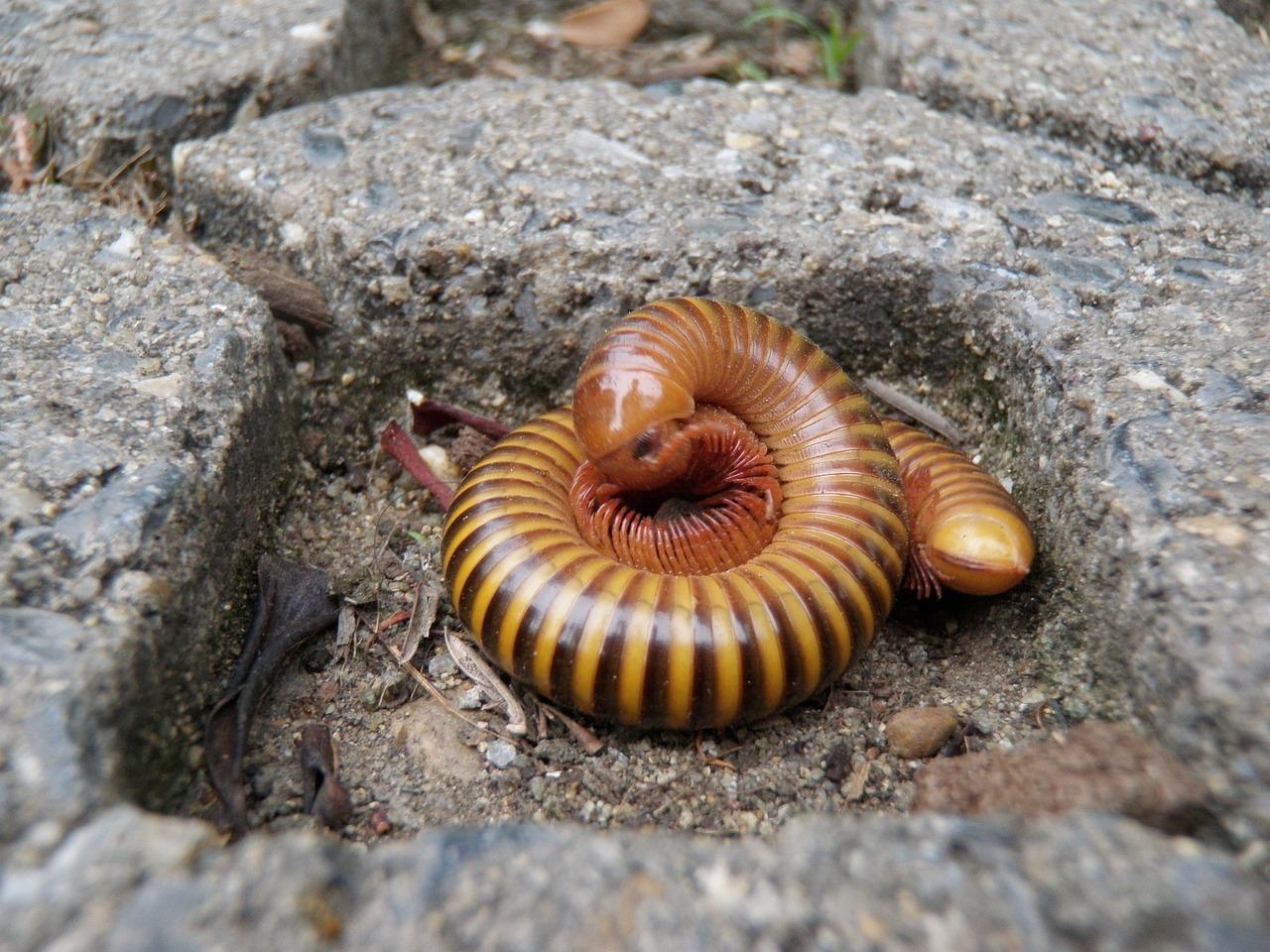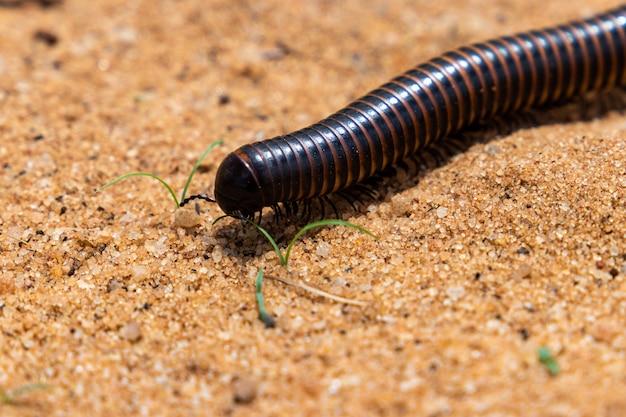Welcome to our comprehensive guide on how to tackle millipede infestations in your soil! If you’ve ever encountered these multi-legged creatures wreaking havoc on your garden or found them invading your home, you’re not alone. In this blog post, we will delve into effective DIY methods to eliminate millipedes from your soil and discuss important questions like whether millipedes are beneficial or detrimental to plants.
We’ll cover a range of topics, including home remedies to get rid of millipedes, the duration of infestations, and the possible reasons behind an increase in millipede populations. Additionally, we’ll explore the use of various products, such as borax and baking soda, to combat these critters. So let’s dive into the world of millipedes and gain some insights into how we can control them effectively.
Let’s begin the journey towards a millipede-free garden and house!
How to Get Rid of those Pesky Millipedes in Your Soil – The DIY Way!
Are you tired of those creepy crawlies invading your soil? Have no fear! In this guide, we will show you the DIY secret to exterminating millipedes like a champ. Say goodbye to those soil-dwelling nuisances and hello to a millipede-free garden. Let’s dig in!
1. Milli-What? Understanding the Enemy
Before we embark on our mission to rid your soil of millipedes, let’s get to know our little foes a bit better. Millipedes may resemble something out of a sci-fi movie, but they are actually harmless creatures, despite their freaky appearance. They enjoy moist environments (which explains their love for your soil) and feed primarily on decaying matter.
2. Make Your Garden Unattractive to Millipedes
Creating an inhospitable environment for millipedes is the first step to sending them packing. These critters love moisture, so be sure to eliminate any standing water in your garden. Fix leaky faucets and pipes, and ensure proper drainage in your pots and planters. By taking away their liquid paradise, you’re already one step ahead of the game.
3. Tidy Up and Remove Their Hiding Spots
Millipedes love nothing more than cozy hideouts. By clearing away organic debris and garden clutter, you’ll be taking away their favorite hiding spots. Remove fallen leaves, dead plant matter, branches, and any other debris that could provide a millipede haven. Think of it as decluttering your garden, just like decluttering your living room, but with fewer throw pillows.
4. Get Your Hands Dirty with Diatomaceous Earth
When it comes to natural millipede control, diatomaceous earth is your best friend. Sprinkle this magical powder around your garden plants and soil. The tiny, sharp particles will stick to the millipedes’ exoskeletons, causing dehydration and ultimately leading to their demise. It’s like setting up a microscopic obstacle course they won’t survive.
5. Introduce Beneficial Predators
Nature has its way of finding balance, and millipedes have their fair share of predators. Introducing natural enemies of millipedes, such as ground beetles and centipedes, can give you a helping hand in your mission to eradicate them. Invite these bug assassins into your garden by creating habitats like rock piles and piles of logs. Who knew you could play matchmaker between pests and predators?
6. Preventing an Encore Performance
Now that you’ve shown those millipedes who’s boss, it’s time to make sure they don’t return for a sequel. Regularly inspect your garden for any conditions that might attract these critters. Keep the soil well-drained, trim back excessive vegetation, and maintain a tidy garden overall. By staying vigilant, you can ensure a millipede-free environment that even the pickiest garden gnomes would approve of.
Wrapping Up
Congratulations, my friend, you have now become a certified millipede terminator! Armed with this essential DIY guide, you can bid adieu to those unwanted guests in your soil. Remember, prevention is key. By making your garden less appealing to millipedes, employing the power of diatomaceous earth, and introducing their natural predators, you can maintain a beautiful, pest-free paradise. So grab your gardening gloves, roll up your sleeves, and show those millipedes who’s boss!
FAQ: How to Kill Millipedes DIY in Soil
This FAQ-style subsection will answer some of the most common questions related to killing millipedes in soil. So, let’s dive right in!
Does Borax Kill Millipedes
Yes, borax can be an effective DIY solution for killing millipedes. Sprinkling a thin layer of borax on the affected soil can dehydrate and kill millipedes, preventing them from causing further trouble in your garden.
Are Millipedes Beneficial to Plants
Millipedes can be beneficial to plants to some extent. They help break down decaying organic matter and contribute to nutrient recycling. However, when their population exceeds a certain point, millipedes can become a nuisance and cause damage to your plants.
Are Millipedes in Soil Bad
While millipedes can play a beneficial role in soil health, having an excessive number of millipedes in your soil can be problematic. They can feed on young roots, seedlings, and even some fruits and leaves, leading to damage to your plants.
Will Baking Soda Kill Millipedes
Unfortunately, baking soda alone is not a reliable method for killing millipedes. While it can be used as a deterrent, it may not effectively eliminate their presence entirely. It’s best to explore other options for effective millipede control.
What Is a Home Remedy to Get Rid of Millipedes
One effective home remedy to get rid of millipedes is to create a damp newspaper trap. Simply roll up some wet newspaper and place it near the affected areas. Millipedes will be attracted to the damp environment and can be easily removed and disposed of.
Are Millipedes Good for the Soil
Millipedes are generally beneficial to soil health. They assist in breaking down organic matter, which aids in nutrient cycling and improving soil structure. However, an excessive millipede population can become a nuisance and harm your plants.
How Do You Control Millipedes
There are a few effective methods to control millipede populations. Removing excess plant debris, improving soil drainage, and reducing excessive mulching can help make your garden less appealing to millipedes. Additionally, using traps, pesticides, or natural deterrents can aid in controlling their numbers.
How Long Does a Millipede Infestation Last
The duration of a millipede infestation can vary depending on various factors such as environmental conditions, food availability, and population size. With proper control measures in place, you can significantly reduce their numbers within a few weeks to months.
What Does It Mean When You Find a Millipede in Your House
Finding a millipede in your house is not necessarily a cause for alarm. They are typically harmless and often enter homes by accident while seeking shelter or moisture. However, if you notice a large number of millipedes indoors, it may indicate an underlying issue that needs attention.
Why Are There So Many Millipedes This Year 2023
In 2023, the thriving millipede population can be attributed to meteorological conditions and environmental factors. Favorable weather patterns, such as increased humidity or specific temperature ranges, can create optimal breeding conditions, resulting in a rise in millipede numbers.
What Attracts Centipedes
Centipedes are attracted to dark, moist environments with ample access to prey. They usually feed on insects, spiders, and other small arthropods. If you have an abundance of these types of insects in your home or garden, it could attract centipedes to your property.
Will Vinegar Kill Centipedes
Vinegar is not an effective method for killing centipedes. While it might repel them temporarily, it won’t eradicate their presence entirely. It’s recommended to focus on eliminating their sources of food and making your environment less enticing to centipedes.
What Product Kills Millipedes
Several products can effectively eliminate millipedes. Look for insecticides containing active ingredients such as bifenthrin, permethrin, or pyrethrin. Always follow the instructions provided on the product labels to ensure safe and effective use.
How Do I Get Rid of Millipedes in My Soil
To get rid of millipedes in your soil, try removing their hiding places, such as garden debris or logs, and ensure proper drainage to reduce excess moisture. You can also employ physical traps or use organic insecticides that specifically target millipedes.
What Is the Best Thing to Kill Millipedes
The best thing to kill millipedes is a combination of prevention and targeted control measures. Maintaining good garden hygiene, reducing excessive moisture, and using chemical insecticides or natural deterrents can help effectively eliminate millipedes from your soil and plants.
Are Millipedes Bad for My Plants
Millipedes can be detrimental to plants when their population surpasses a certain threshold. They primarily feed on decaying plant matter but can start consuming healthy roots, seedlings, and foliage in large numbers. Thus, it’s essential to monitor their presence and take necessary actions when needed.
How Do I Permanently Get Rid of Millipedes
While it can be challenging to permanently get rid of millipedes, you can significantly reduce their presence through consistent prevention and control efforts. This includes maintaining proper garden hygiene, using targeted insecticides, and implementing environmental modifications that make your property less attractive to millipedes.
What Animals Eat Millipedes
Several animals consider millipedes as part of their diet. Some common millipede predators include birds, toads, frogs, lizards, and certain types of beetles. These natural predators can help control millipede populations in outdoor environments.
Now that you’re armed with answers to the most FAQs about killing millipedes in soil, you can take the necessary steps to keep your garden millipede-free and your plants thriving. Happy gardening!

